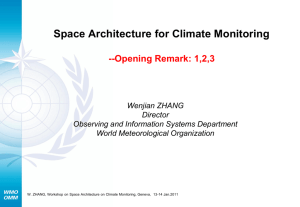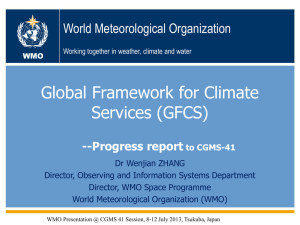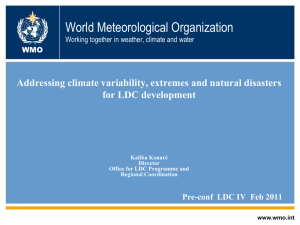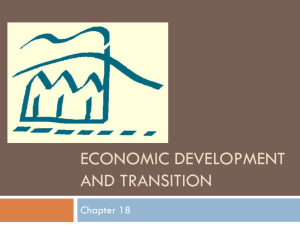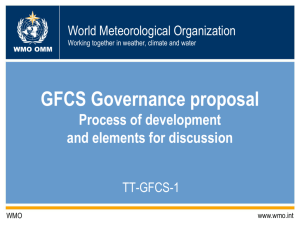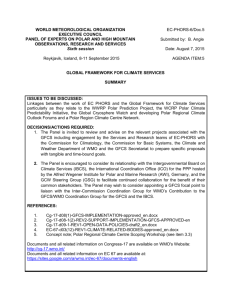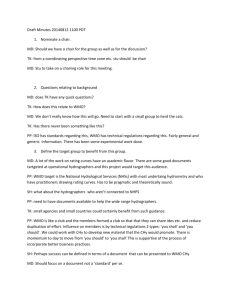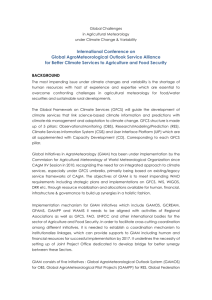By M. Jarraud WMO Secretary-General IVth UN Conference
advertisement
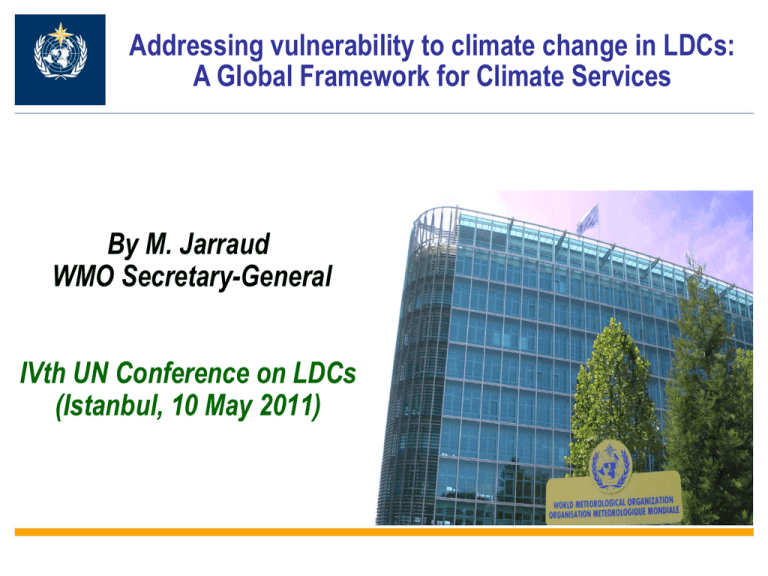
Addressing vulnerability to climate change in LDCs: A Global Framework for Climate Services By M. Jarraud WMO Secretary-General IVth UN Conference on LDCs (Istanbul, 10 May 2011) Natural disasters & climate change The frequency of hydro meteorological disasters is increasing, but we are saving more and more lives Climate change will increase the risks even further 2 closely related issues: Climate change adaptation Disaster risk reduction A need to: Further reinforce the capacities of the developing world, especially LDCs Expand multidisciplinary partnerships A Global Framework for Climate Services (GFCS) will contribute to provide all decision-makers with the most relevant information to support their national mandates IPCC 4th Assessment: Socio-economic Impacts of ClimateRelated Extremes on the Rise ! Energy Hazard intensity and frequency increasing linked to climate variability and change! Transportation Water Resource Management Intensity Strong Wind People Heavy rainfall / Flood Agriculture Urban areas Vulnerability and exposure on the rise ! Drought Need for Multi-sectoral risk management Heatwaves Frequency A seamless transition from weather to climate prediction The 3rd World Climate Conference (WCC-3, 2009) Three World Climate Conferences held in 1979, 1990 and 2009 The WCC-3 High-level segment agreed by acclamation : To establish of a Global Framework for Climate Services (GFCS) That a High-level Taskforce of independent advisors should prepare a report with recommendations on proposed elements That WMO Cg-XVI should adopt a decision in May/June 2011 5 8 implementation principles Prioritize capacity building for developing countries Greater availability of climate services for all countries, in particular LDCs 3 geographic domains: global, regional and national A core GFCS element: operational climate services Governments to have a central role in GFCS management, but each country will decide just how Free and open exchange of observational data, while respecting national and international data policies To facilitate and to strengthen, but not to duplicate Based on user – provider partnerships which will include all major stakeholders 6 GFCS recommended structure 7 Thank you Merci Gracias 8 9 The High-level Taskforce shall now present its report to WMO Congress Mr Mahmoud Abu-Zeid (Egypt; Co-chair) Mr Jan Egeland (Norway; Co-chair) Mr Joaquim Chissano (Mozambique) Mr Angus Friday (Grenada) Ms Eugenia Kalnay (Argentina/USA) Mr Ricardo Lagos (Chile) Ms Julia Marton-Lefèvre (France/ USA/ Hungary) Mr Khotso Mokhele (South Africa) Ms Chiaki Mukai (Japan) Ms Cristina Narbona Ruiz (Spain) Mr Rajendra Singh Paroda (India) Mr Qin Dahe (China) Mr Emil Salim (Indonesia) Ms Fiame Naomi Mata’afa (Samoa) 10 HLT report structure 11 2 HLT Governance proposals 12 HLT-proposed steps for GFCS development By end 2011, a detailed implementation plan and inaugural Intergovernmental plenary meeting By end 2013, the organizational phase to be completed for LDCs, including secretariat & management structures By end 2017, global access to improved climate services for 4 selected priority sectors: agriculture, disaster risk reduction, health and water By end 2021, improved climate services globally across most climate-sensitive sectors Capacity building Follow-up to Conference of Ministers responsible for meteorology in Africa (Nairobi, April 2010) Sustainable development Human resources development Continuing education and training Special needs of LDCs Gender empowerment 14 WMO monitoring and observations WMO Integrated Global Observing Systems (WIGOS) implementation WMO Information System (WIS) development Support to the IPCC and UNFCCC Disaster risk reduction Sustaining the needs of the developing world 15
